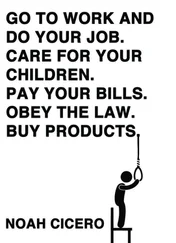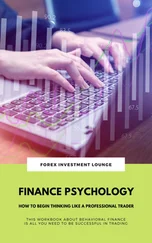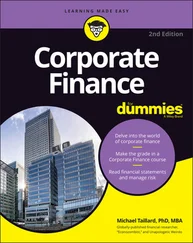Figure 2.2 below is a roadmap for the 20 biases that you will be seeing in the upcoming chapters.
The cognitive-emotional distinction will help us determine when and how to adjust for behavioral biases in financial decision making. However, it should be noted that specific biases may have some common aspects and that a specific bias may seem to have both cognitive and emotional aspects. Researchers in financial decision making have identified numerous and specific behavioral biases. This book will not attempt to discuss all identified biases but rather will discuss what I consider to be the most important biases within the cognitive-emotional framework for considering potential biases. This framework will be useful in developing an awareness of biases, their implications, and ways of moderating their impact or adapting to them. The intent is to help investors and their advisors to have a heightened awareness of biases so that financial decisions and resulting economic outcomes are potentially improved.
PART II BELIEF PERSEVERANCE BIASES DEFINED AND ILLUSTRATED
In Chapters 3through 22, 20behavioral biases, both cognitive and emotional, will be discussed. There are two types of cognitive bias reviewed in Chapters 3through 15. The first type, belief perseverance biases, the focus of Part Two of the book, are covered now in Chapters 3through 8. The second type, information processing cognitive biases, will be covered in Chapters 9through 15. Emotional biases are then covered in Chapters 16through 22.
In these chapters, the same basic format is used to discuss each bias, in order to promote greater accessibility. First, each bias is named, categorized as emotional or cognitive, including subtype (belief perseverance or information processing), and then generally described. This is followed by the all-important concrete practical application, in which it is demonstrated how each bias has been used, or can be used, in a practical situation. The practical application portion varies in content, consisting of either an intensive review of applied research or a case study. Implications for investors are then delineated. A diagnostic test and test-result analysis follow, providing a tool to indicate potential susceptibility to certain biases. Finally, advice on managing the effects of each bias, in order to minimize its effects, is offered.
3 Belief Perseverance Bias #1: Cognitive Dissonance Bias
This above all: to thine own self be true, And it must follow, as the night the day, Thou canst not then be false to any man .
— Polonius to Laertes, in Shakespeare'sHamlet
Bias Name:Cognitive dissonance
Bias Type:Cognitive
Subtype:Belief perseverance
When newly acquired information conflicts with preexisting understandings, people often experience mental discomfort—a psychological phenomenon known as cognitive dissonance. Cognitions, in psychology, represent attitudes, emotions, beliefs, or values; cognitive dissonance is a state of imbalance that occurs when contradictory cognitions intersect.
The term cognitive dissonance encompasses the response that arises as people struggle to harmonize cognitions and thereby relieve their mental discomfort. For example, a consumer might purchase a certain brand of mobile phone, initially believing that it is the best mobile phone available. However, when a new cognition that favors a substitute mobile phone is introduced, representing an imbalance, cognitive dissonance occurs in an attempt to relieve the discomfort that comes with the notion that perhaps the buyer did not purchase the right mobile phone. People will go to great lengths to convince themselves that the mobile phone they actually bought is better than the one they just learned about, to avoid mental discomfort associated with their initial purchase. In essence, they persist in their belief that they are correct. In that sense, cognitive dissonance bias is the basis for all of the belief perseverance biases in this section with different variations on the same theme.
Example of Cognitive Dissonance
Smoking is a classic example of cognitive dissonance. Although it is widely accepted by the general public that cigarettes cause lung cancer and heart disease, virtually everyone who smokes wants to live a long and healthy life. In terms of cognitive dissonance theory, the desire to live a long life is dissonant with the activity of doing something that will most likely shorten one's life. The tension produced by these contradictory ideas can be reduced by denying the evidence of lung cancer and heart disease or justifying one's smoking because it reduces stress or similar benefit. A smoker might rationalize his or her behavior by believing that only a few smokers become ill (it won't be me), that it only happens to two-pack-a-day smokers, or that if smoking does not kill them, something else will. While chemical addiction may operate in addition to cognitive dissonance for existing smokers, new smokers may exhibit a simpler case of the latter.
This case of dissonance could also be interpreted in terms of a threat to the self-concept. 1 The thought, “I am increasing my risk of lung cancer,” is dissonant with the self-related belief, “I am a smart, reasonable person who makes good decisions.” Because it is often easier to make excuses than it is to change behavior, dissonance theory leads to the conclusion that humans are sometimes rationalizing, and not always rational beings.
Implications for Investors
Investors, like everyone else, sometimes have trouble living with their decisions and they often go to great lengths to rationalize decisions on prior investments, especially failed investments. Moreover, people displaying this tendency might also irrationally delay unloading assets that are not generating adequate returns. In both cases, the effects of cognitive dissonance are preventing investors from acting rationally and, in certain cases, preventing them from realizing losses for tax purposes and reallocating at the earliest opportunity. Furthermore, and perhaps even more important, the need to maintain self-esteem may prevent investors from learning from their mistakes. To ameliorate dissonance arising from the pursuit of what they perceive to be two incompatible goals—self-validation and acknowledgment of past mistakes—investors will often attribute their failures to chance rather than to poor decision making. Of course, people who miss opportunities to learn from past miscalculations are likely to miscalculate again, renewing a cycle of anxiety, discomfort, dissonance, and denial.
Both selective perception (information distortion to meet a need, which gives rise to subsequent decision-making errors) and selective decision making (an irrational drive to achieve some specified result for the purpose of vindicating a previous decision) can have significant effects on investors. Box 3.1illustrates four behaviors that result from cognitive dissonance and that cause investment losses.
BOX 3.1Cognitive Dissonance Bias: Behaviors That Can Cause Investment Mistakes
1 Cognitive dissonance can cause investors to hold losing securities positions that they otherwise would sell because they want to avoid the mental pain associated with admitting that they made a bad decision.
2 Cognitive dissonance can cause investors to continue to invest in a security that they already own after it has gone down (average down) to confirm an earlier decision to invest in that security without judging the new investment with objectivity and rationality. A common phrase for this concept is “throwing good money after bad.”
Читать дальше












